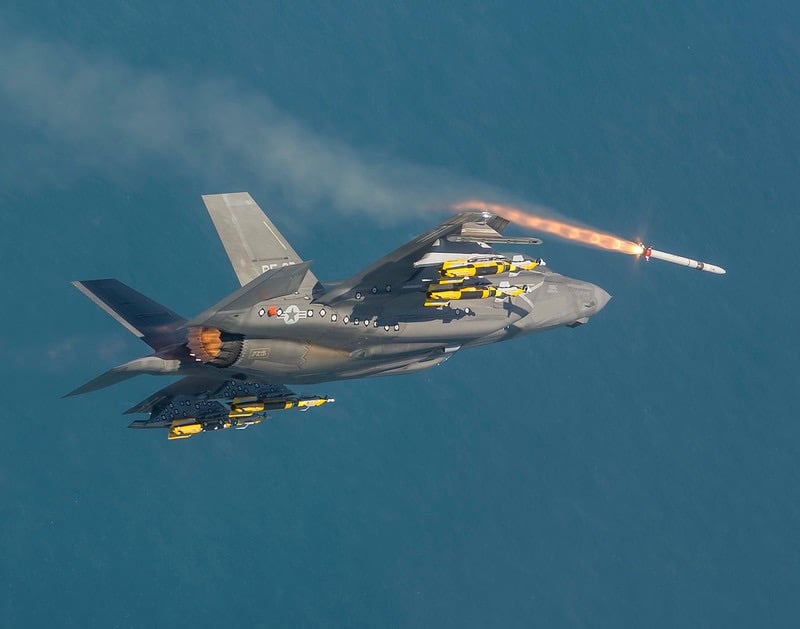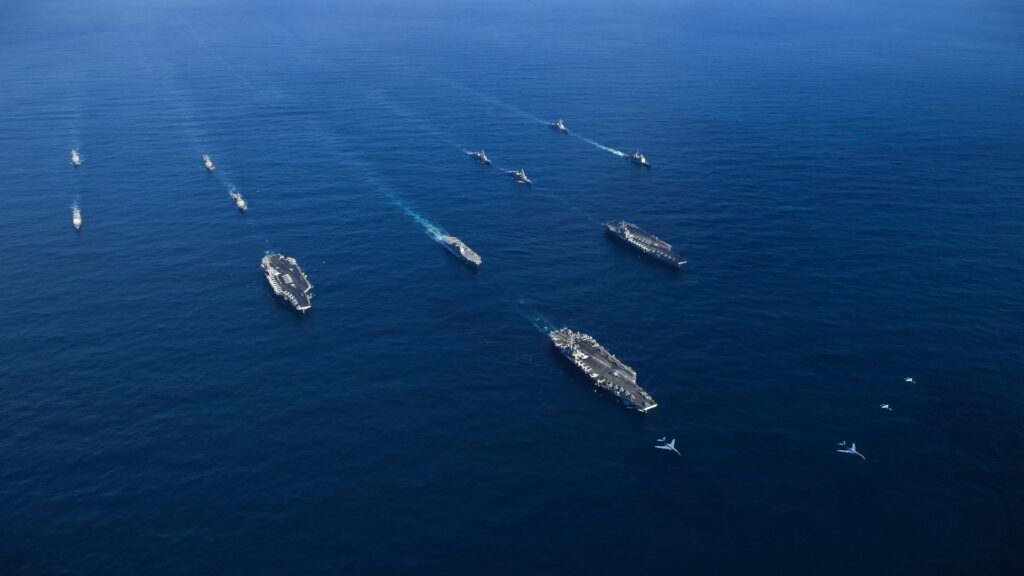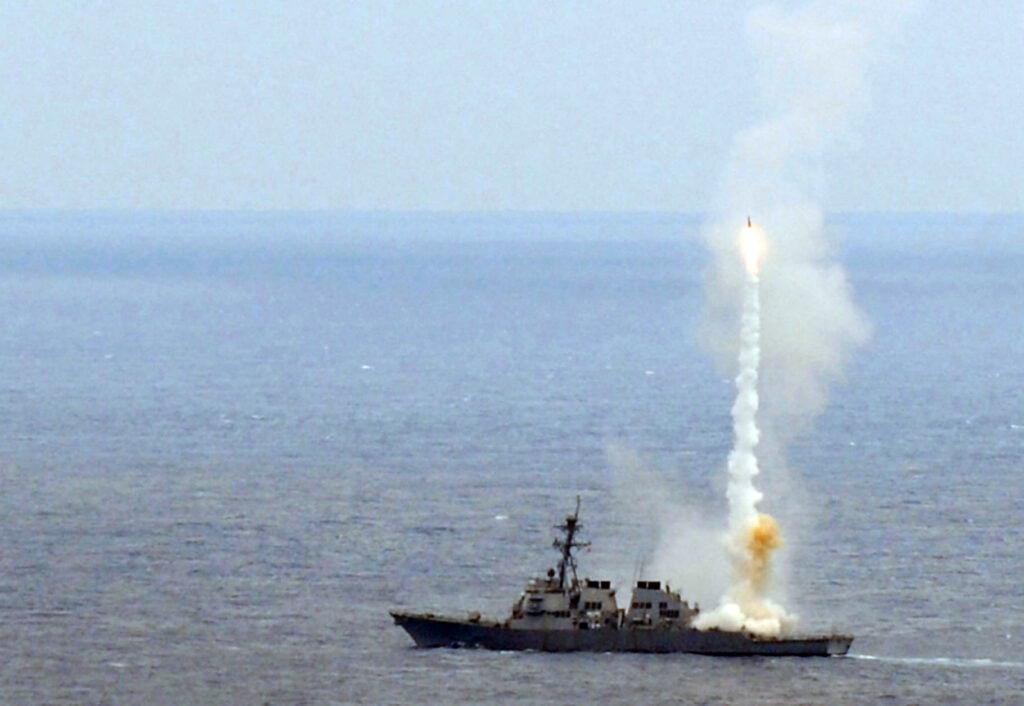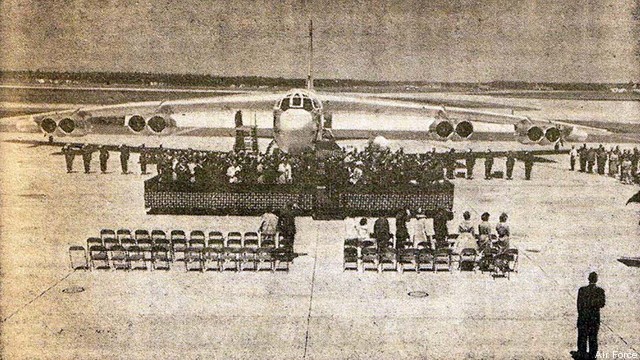
F-35
The Biden administration aims to deter aggression by China and Russia, all without significant defense budget growth. The challenge then is to discern where to invest, where to divest, and where to accept or manage risk: That is the essence of strategy.
Strategy must begin by analyzing the threat. Based on my analysis, the US needs to shift investment from hallowed but vulnerable legacy platforms – especially aircraft carriers and B-52 bombers – to more flexible and survivable weapons systems – above all, Aegis warships and the unfairly much-maligned F-35.
Why? The recently released interim national security strategic guidance states “in the face of strategic challenges from an increasingly assertive China and destabilizing Russia, we will…shift our emphasis from unneeded legacy platforms and weapon systems to free up resources for investments in the cutting-edge technologies and capabilities that will determine our military and national security advantage in the future.”
“There is no doubt” that China “poses the most significant challenge of any nation state to the United States.” So said Secretary of State Antony Blinken during his confirmation hearing before the Senate Foreign Relations Committee. Secretary of Defense Lloyd Austin during his confirmation hearing noted “we’ll have to have capabilities that allow us to hold – to present a credible threat, a credible deterrent…to China in the future.”

Three nuclear-powered supercarriers — Reagan, Roosevelt, and Nimitz — and their escorts exercise together in the Pacific.
China and Russia. Rather than speaking of a fight against terrorism, the strategic guidance states that the U.S. will “promote a favorable distribution of power to deter and prevent adversaries from directly threatening the United States and our allies, inhibiting access to the global commons, or dominating key regions.” This comes as no surprise and mirrors the strategic analysis of the previous administration.
It was an article of faith during the Cold War that V Corps and the 250,000 U.S. troops stationed in West Germany were a capable deterrent to prevent the Soviets from rushing across the Fulda Gap, along with the credible nuclear threat of our strategic triad of more than 31,000 weapons at its peak. We avoided a war, but we also operated around the edges of conflict with forces that were appropriate to the foe we faced.
Today we cling to some archaic platforms and systems while overlooking capabilities that are the best tools in our kit bag. The metric that should be used is relevance – are we investing in capabilities that will be useful in the battles of the future?

USS Fitzgerald launches an SM-2 missile.
The most likely military friction points in this great power competition are at sea, in the air, and in space. As the recently released tri-service maritime strategy notes, the U.S. Navy has been guarantor of the freedom of use of the maritime commons, which China is increasingly challenging. Moreover, there is a consensus, even among those who advocate moderating U.S. foreign policy ambitions that the Navy is “the military capability most essential for protecting America’s national interests.”
But aircraft carriers are not the critical tool. The naval forces operating in the gray zones, conducting freedom of navigation operations, ensuring America’s domination of the seas, and defending the rest of the fleet – as well as, at times, the land – from air and missile attack are the 92 Aegis cruisers and destroyers in the fleet. Defense planners and their Congressional overseers should scrutinize where the investments in maritime superiority are being prioritized – and of the Aegis ships, only the Arleigh Burke destroyers are currently in production.
The most credible deterrent is not, however, our naval capability, but our air power. For at least the past thirty years, we have been able to dominate the air domain. But we have done that against archaic enemy air forces and air defense systems. China possesses significant capabilities to threaten approaching US aircraft and warships, and deterring them demands a capability to operate inside a layered Anti-Access/Area Denial defense, alongside allies. We forget that we have operated in a permissive environment for decades, and discounting that we will do so at our own peril. We need aircraft that can survive, and we cannot take for granted our air superiority. We lost nearly 3,744 fixed wing aircraft in Vietnam.

The Air Force’s B-52 bombers entered service in 1955, with the last delivered in 1962.
Current plans call for maintaining 76 B-52 bombers until at least 2050, an aircraft that is not survivable against even archaic air defenses: 17 B-52s were shot down in Vietnam. Estimates to just replace the engines are $1.4 billion, and the cost to bring a single moth-balled B-52 aircraft back into service will run $30 million. Bombers do far less than we think and are also far more costly than we recognize.
In contrast, the F-35 will be one of the keys to that credible deterrence against China. It costs less to fly than the B-52, and operating alongside F-35s from Japan’s Air Defense Command, and even our close British allies, who have F-35s aboard the HMS Queen Elizabeth’s maiden deployment, which will include the Indo-Pacific. That an assertive China would confront an alliance of interoperable, equally capable and survivable air forces is the most credible deterrent to Chinese military aggression.
Scott Cooper is a retired Marine Corps aviator and the author of the book No Fly Zones and International Security, published in 2019 by Routledge Press.
Boeing buys GKN factory, ending dispute over F-15, F/A-18 parts
Through the deal, Boeing’s litigation with supplier GKN Aerospace will be dropped, and the aerospace giant will take possession of a St. Louis-area factory it used to own.


























